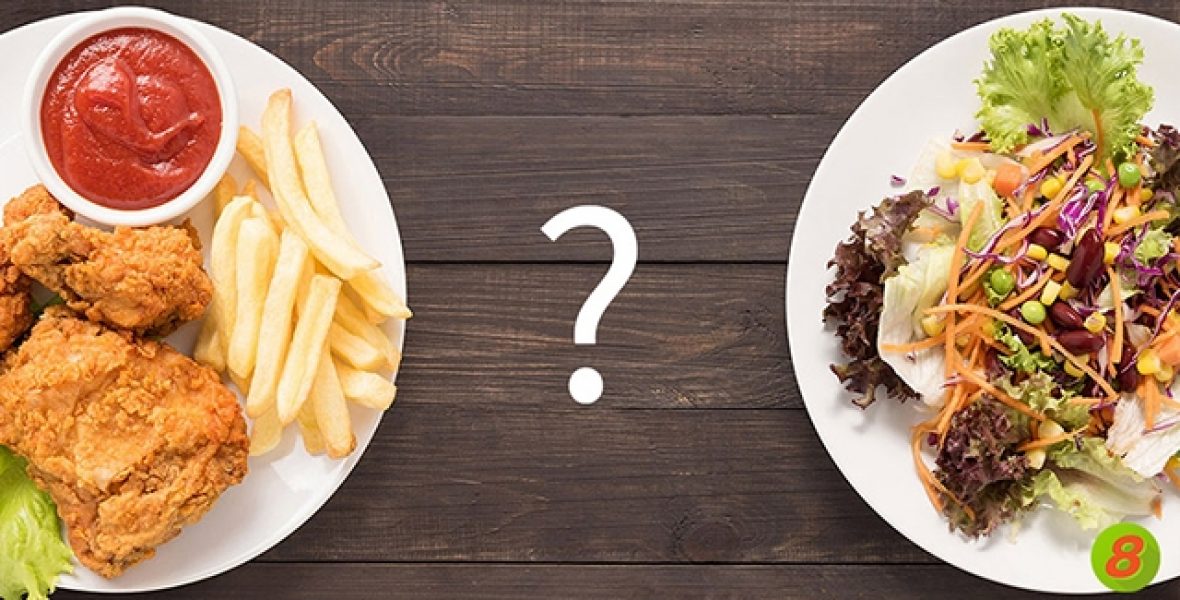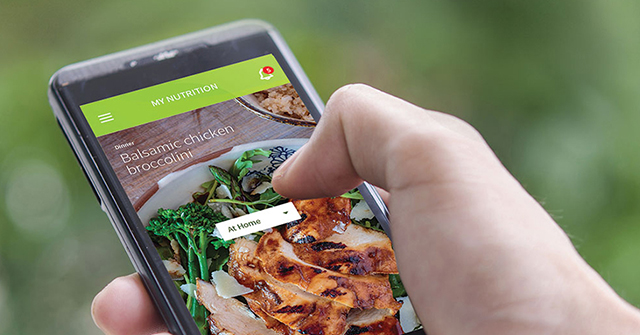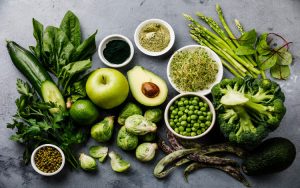Food, glorious food! It’s calorie and nutrient content staves off hunger, gives you energy, affects your hormones and impacts your metabolism. BUT, not all calories were created equal! Jaclyn Reutens, Active8me nutrition expert and Dietician at Aptima Nutrition and Sports Consultants, shares with you some tried and tested solutions to choosing foods that will give you a weight loss advantage, in addition to improving your health. Plus, who doesn’t love the idea of eating more and losing weight?
All the fun with little consequence: Low Calories with High Impact
The simple formula to a weight loss advantage is Calories Consumed < (are less than) Calories Burned, so you generally think you must eat less and move more. However, foodie lovers, don’t fear! Eating less calories doesn’t necessarily mean you must eat less food. You can eat abundantly, you just need to choose the right foods.
Jaclyn suggests “guava, apples and the exotic jambu. They pack a lovely crunch, have high water content (which acts to fill you up) with very low calories. They have the added benefit of high potassium, quercetin and vitamin C” and she adds “they are perfect for before and after your workouts too.”
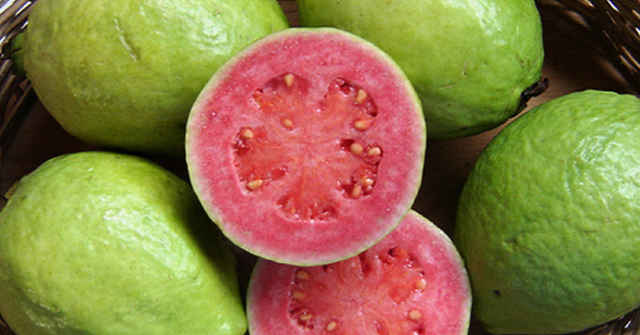
Here’s some other healthy eating food suggestions for you.
Fill up on Fibre
A recent study in Nutrients journal found that “fibre supplementation can potentially reduce energy intake and contribute to weight loss.” The researchers suggested that consuming more fibre reduced the frequency of eating, resulting in less food consumed over the day.
High fibre foods tend to take more work for your system to digest, therefore using energy as you consume. Jaclyn advocates including fibre in your snack foods to increase satiety (feeling full), for example “try celery, carrot and cucumber sticks dipped in low fat cream cheese or salsa! Salsa has zero fat content and that tangy taste perks up your tastebuds”.
Find out more about how tomatoes can make you look younger!
Protein Powerhouses
Protein promotes muscle repair and growth, helps mobilise fat to burn as fuel and can increase your metabolism because of the extra ‘effort’ it takes your body to digest it. So, what came first, the egg or the chicken? It doesn’t really matter as both are great protein additions to a weight loss regime.
“Eggs are wonderful source of easily digestible protein, with a high satiety level. Start your day with eggs cooked your way; poached, sunny-side up or scrambled” recommends Jaclyn, adding the warning “go easy on the amount of cooking oil and fat used”.
Further to that, Jaclyn highlights that “lean meats also fill you up while complimenting the carbohydrate and high-fibre foods in a well-balanced meal. This combination makes fat-burning a no-brainer in your body.”
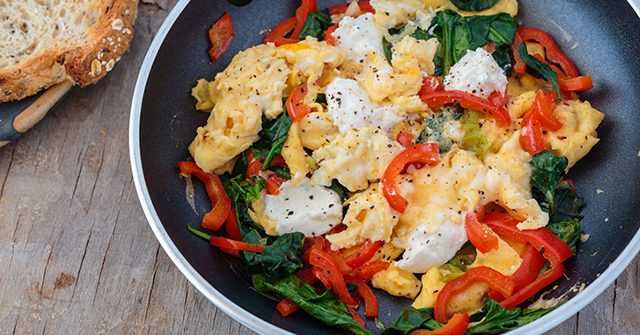
Clever Cruciferous Choices
Cruciferous vegetables, such as broccoli, cauliflower, cabbage and brussels sprouts seem to be the darling of the vegetable world. They are great to include in your stir fry or salads. (Try throwing ‘cruciferous’ into a sentence and you’ll be sure to impress!) They are a great source of fibre and are generally low in calories – so you feel fuller for longer and don’t have to eat less if you are trying to lose weight. In addition, their high antioxidant levels are great for your eyes and are linked to preventing cancer.
Find the recipe for Balsamic Chicken, Broccolini & Rocket Salad in the Active8me App
Dairy Do-over
Dairy foods have experienced both persecution and favour in the evolution of healthy eating. They sometimes get a ‘bad rep’, but recent studies have reported positive weight loss outcomes for those adding high calcium and high dairy foods to their diet. In a meta-analysis published in Nutrients journal, “increased dairy intake as part of energy restricted diets resulted in greater loss in bodyweight and fat mass”.
Jaclyn advises that it is favourable to add dairy products that are high in protein and calcium in the form of cottage cheese, ricotta cheese, low fat yoghurts and milks and suggests there are some studies showing a correlation between overweight and obese people being calcium deficient.
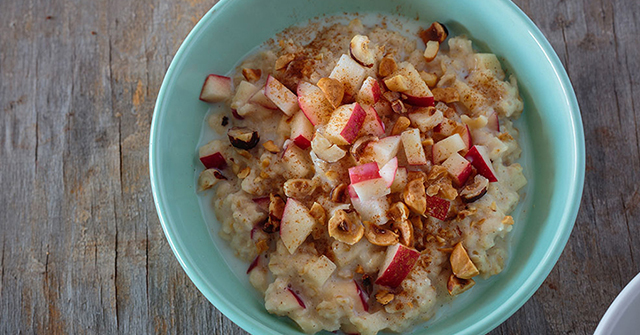
Low GI, say what?
Here is a chance to flaunt your foodie IQ. What is GI? Why is it important and why is it better to eat low GI foods? Let Active8me’s nutrition expert Jaclyn enlighten you. “The Glycemic Index (GI) is a rating on how slowly or quickly carbohydrate foods take to raise your blood sugar levels. Simply, the lower the GI of a food, the longer it keeps you full. Based on this principle, it helps you to control your appetite and hunger pangs, meaning less overall calorie intake, which is great for weight loss!”
Wholegrain cereals, such as oats are a good example of low GI Food. Filling up on something like the Active8me Porridge with Apple & Hazelnuts for breakfast gives you the energy you need to face the day and can take you through the morning without feeling like you need a sugar hit to survive.
A warning though, a lot of processed and packaged foods advertise ‘Contains Wholegrains’. While this may be true, they often neglect to inform you of the high sugar content, negating the low GI benefits of wholegrains. So be aware, that just because it says ‘wholegrains’ on the label doesn’t mean it will give you a weight loss advantage!
A Word of Caution
So, can you eat more and lose weight? Yes and no. Of course, it depends on what you eat as you’ve learned above – not all calories are created equal. It also depends on how much you consume.
A recent study at the University of Texas suggests that people eat more than the recommended serving size when they eat what they consider to be healthy food. They found that people automatically consider healthy food less filling and therefore eat more. Yet, the opposite is true. Don’t forget that healthy food is more filling, more nutritious and will nourish your body. Remember not to throw portion control out the window and be mindful of what, and how much, food you put in your mouth!
